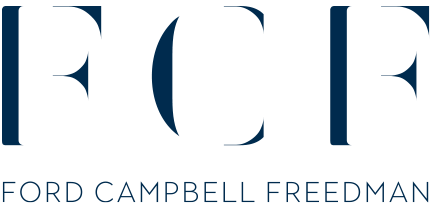Yasir Abbas outlines possible tax planning opportunities to consider before the tax year end on 5 April 2024. With the self-assessment season over, March is the ideal time to take stock of your tax position and review what may be done to reduce tax burdens before the end of the tax year.
Individuals: Director dividends
If you are a Director and Shareholder and haven’t used your personal or dividend allowance so far in 2023/24, extracting profits before 5 April 2024 makes sense so that the allowances are not wasted. In a family company situation, the availability of family members’ allowances should also be reviewed to ascertain whether they can be utilised to extract profits before the year end.
Consideration should also be given to paying a dividend to use up any balance remaining of the 2023/24 basic rate band, if delaying the extraction of profits until 2024/25 will mean being taxed at a higher rate. Note that money withdrawn as interim dividends are treated as distributions when paid, and final dividends when declared (or the date on which they are due to be paid, if specified in the resolution declaring the dividend).
Individuals: Directors’ loans
At the time of writing, bank interest rates for personal borrowing are at a fourteen-year high at approximately 6.7%. If your company has a healthy bank balance and you need cash, rather than go to a bank, you can borrow from your company and repay the loan at a later date you’re your salary or dividends are paid. Director loans are usually (but not necessarily) made on an interest-free basis.
The loan may result in a tax bill as it counts as a benefit-in-kind, but a tax advantage is that the tax charge will often be minimal. Tax is charged on an employer-arranged low-interest or no-interest loan on the difference between the interest paid (if any) and the HMRC beneficial rate – currently just 2.25% (e.g., an interest-free loan of £20,000 to a director for the whole of 2024/25 results in a benefit of £20,000 x 2.25% = £450. The employer is also liable to secondary National Insurance contributions (NICs)).
A point to watch out for is repayment of the loan by nine months and one day after the accounting year end. If the loan is not repaid and your interest in the company is more than 5% of the share capital and the loan exceeds £15,000, then the company has to pay a tax charge of 33.75%. for 2024/25. Whilst this is repayable when the loan is written off it is a cashflow point to be aware of.
The plan should generally be for you to withdraw the loan as early as possible in the company’s accounting year (e.g., if the company’s accounting year end is 31 March 2024, you should generally wait until 1 April and then withdraw the cash) to give the maximum length of time for the loan to be repaid.
Individuals: Pension planning
The pensions annual allowance ‘cap’ stands at £60,000, or 100% of earnings if lower (‘earnings’ being from salary, bonus, taxable benefits, or royalties). Unused annual allowances can be carried forward for a maximum of three tax years, such that 5 April 2024 is the last opportunity to use any unused allowance from 2020/21. This assumes you do not have a high income (above £200,000) or have flexibly accessed your pension pot in which case your annual allowance may be lower.
The change in tax band level from £150,000 for 2022/23 to £125,140 for 2023/24 means that some employees (not only directors) may find themselves slipping into the higher tax rate band. Paying extra into a pension scheme reduces the adjusted net income (as does making charitable contributions). Making extra pension contributions not only increases pension provision, but for those who may be subject to a reduced personal allowance (i.e., those earning above £100,000), a personal pension contribution could claw back some of this allowance, giving an effective tax saving of around 60%, or more with salary sacrifice.
Pension contributions can also help families retain their child benefit, which is progressively cut back if one parent or partner in the household has income of more than £50,000. Child benefit is completely lost when income reaches £60,000.
Companies whose employees pay into a scheme could consider paying extra before the end of the tax year.
It should be checked that the maximum salary necessary to ensure the year counts towards the state pension has been made. As directors have an annual earnings period for NICs purposes, the salary could be paid in the March payroll run.
Individuals: Capital gains tax
The annual exemption for capital gains tax (CGT) is reduced to £3,000 from 6 April 2024. Usually, financial advisors advise clients to sell assets before this date to take advantage of the higher CGT allowance; but a tax saving up to a maximum of £540 for a basic rate taxpayer and £840 for higher-rate taxpayers (depending upon the type of asset) may not be incentive enough to sell a few days before the tax year end.
However, transferring assets to a spouse or civil partner (if they have any unused annual exemption or capital losses) and selling before 5 April so taking advantage of two sets of annual allowance might prove attractive. Note that these transfers must be made outright with no preconditions, or they may be challenged.
Individuals: In-date claims
The end of a tax year means a year less in the time limit for making claims. Time limits for specific claims vary, although most must be claimed within four years after the end of the relevant tax year (e.g., CGT gift relief, overpayment relief, repayment claims, backdated marriage allowance transfer allowance claims); however, main residence elections are two years.



